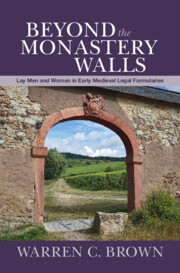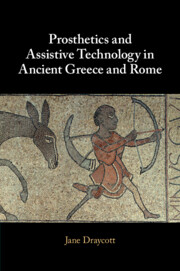Refine search
Actions for selected content:
23990 results in Ancient history
References
-
- Book:
- The Greeks and Their Histories
- Published online:
- 01 December 2022
- Print publication:
- 15 December 2022, pp 138-160
-
- Chapter
- Export citation
Chapter 11 - Scribal Networks, Taxation, and the Role of Coptic in Marwanid Egypt
- from Part III - Social and Cultural Connections
-
-
- Book:
- Egypt and the Eastern Mediterranean World
- Published online:
- 01 December 2022
- Print publication:
- 15 December 2022, pp 353-378
-
- Chapter
- Export citation
Part II - Economic Connections
-
- Book:
- Egypt and the Eastern Mediterranean World
- Published online:
- 01 December 2022
- Print publication:
- 15 December 2022, pp 203-322
-
- Chapter
- Export citation
Figures, Graphs, and Tables
-
- Book:
- Egypt and the Eastern Mediterranean World
- Published online:
- 01 December 2022
- Print publication:
- 15 December 2022, pp vii-viii
-
- Chapter
- Export citation
Tables
-
- Book:
- The Rural Landscapes of Archaic Cyprus
- Published online:
- 18 February 2023
- Print publication:
- 15 December 2022, pp xiii-xiv
-
- Chapter
- Export citation
Contents
-
- Book:
- Egypt and the Eastern Mediterranean World
- Published online:
- 01 December 2022
- Print publication:
- 15 December 2022, pp v-vi
-
- Chapter
- Export citation
Chapter 6 - Ibn Ṭūlūn’s Pacification Campaign: Sedition, Authority, and Empire in Abbasid Egypt
- from Part I - Political and Administrative Connections
-
-
- Book:
- Egypt and the Eastern Mediterranean World
- Published online:
- 01 December 2022
- Print publication:
- 15 December 2022, pp 169-202
-
- Chapter
- Export citation
Preface
-
- Book:
- The Rural Landscapes of Archaic Cyprus
- Published online:
- 18 February 2023
- Print publication:
- 15 December 2022, pp xv-xx
-
- Chapter
- Export citation
References
-
- Book:
- The Rural Landscapes of Archaic Cyprus
- Published online:
- 18 February 2023
- Print publication:
- 15 December 2022, pp 288-349
-
- Chapter
- Export citation
Dedication
-
- Book:
- The Rural Landscapes of Archaic Cyprus
- Published online:
- 18 February 2023
- Print publication:
- 15 December 2022, pp v-vi
-
- Chapter
- Export citation
Chapter 9 - Trading Activities in the Eastern Mediterranean through Ceramics between Late Antiquity and Fatimid Times (Seventh–Tenth/Eleventh Centuries)
- from Part II - Economic Connections
-
-
- Book:
- Egypt and the Eastern Mediterranean World
- Published online:
- 01 December 2022
- Print publication:
- 15 December 2022, pp 272-322
-
- Chapter
- Export citation
Notes on Transliteration, Names, and Dates
-
- Book:
- Egypt and the Eastern Mediterranean World
- Published online:
- 01 December 2022
- Print publication:
- 15 December 2022, pp xiii-xiii
-
- Chapter
- Export citation
Appendix - List of Survey Sites in the Vasilikos and Maroni Valleys
-
- Book:
- The Rural Landscapes of Archaic Cyprus
- Published online:
- 18 February 2023
- Print publication:
- 15 December 2022, pp 267-274
-
- Chapter
- Export citation
3 - Unruly Landscapes
- from Part I - On Environs
-
- Book:
- The Rural Landscapes of Archaic Cyprus
- Published online:
- 18 February 2023
- Print publication:
- 15 December 2022, pp 76-110
-
- Chapter
- Export citation
2 - Reassessing the “Land” of Landscape
- from Part I - On Environs
-
- Book:
- The Rural Landscapes of Archaic Cyprus
- Published online:
- 18 February 2023
- Print publication:
- 15 December 2022, pp 43-75
-
- Chapter
- Export citation
Chapter 8 - Egypt’s Connections in the Early Caliphate: Political, Economic, and Cultural
- from Part II - Economic Connections
-
-
- Book:
- Egypt and the Eastern Mediterranean World
- Published online:
- 01 December 2022
- Print publication:
- 15 December 2022, pp 238-271
-
- Chapter
- Export citation

Beyond the Monastery Walls
- Lay Men and Women in Early Medieval Legal Formularies
-
- Published online:
- 09 December 2022
- Print publication:
- 29 December 2022

Reading Kenneth Frampton
- A Commentary on 'Modern Architecture', 1980
-
- Published by:
- Anthem Press
- Published online:
- 09 December 2022
- Print publication:
- 10 May 2022

Prosthetics and Assistive Technology in Ancient Greece and Rome
-
- Published online:
- 08 December 2022
- Print publication:
- 22 December 2022
Dedication
-
- Book:
- Cicero and the People’s Will
- Published online:
- 24 November 2022
- Print publication:
- 08 December 2022, pp v-vi
-
- Chapter
- Export citation
